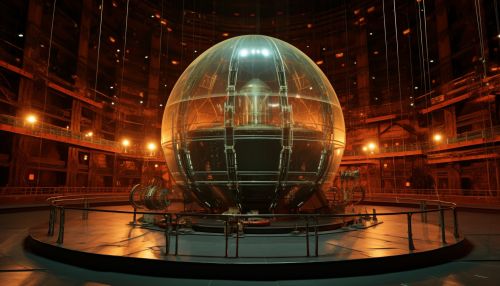Advances in Understanding the Physics of Neutrinos
Introduction
Neutrinos are one of the fundamental particles which make up the universe. They are also one of the least understood. Neutrinos are similar to the more familiar electrons, with one crucial difference: neutrinos do not carry electric charge. As a result, neutrinos are extremely difficult to detect, as they do not directly interact with matter.


Properties of Neutrinos
Neutrinos are subatomic particles that are very similar to electrons but have no electrical charge and a very small mass, which might even be zero. Neutrinos are one of the most abundant particles in the universe. Because they have very little interaction with matter, they are incredibly difficult to detect.
Neutrino Types
There are three types of neutrinos: electron neutrinos, muon neutrinos, and tau neutrinos. Each type is associated with an antiparticle, called an antineutrino, which also has neutral electric charge and spins in the opposite direction.
Neutrino Mass
The exact masses of neutrinos are still unknown, but they are believed to be very small. The discovery that neutrinos have mass was a major breakthrough in physics. This discovery was made through the observation of neutrino oscillation, a phenomenon in which neutrinos change type as they travel.
Neutrino Sources
Neutrinos are produced in a variety of ways. Some of the most common sources of neutrinos include the sun, supernovae, and nuclear reactions in power plants.
Solar Neutrinos
The sun is a major source of neutrinos, producing them through nuclear fusion reactions. These neutrinos, known as solar neutrinos, are primarily electron neutrinos.
Supernova Neutrinos
Supernovae, the explosive deaths of massive stars, are another significant source of neutrinos. During a supernova, a large amount of the star's energy is released in the form of neutrinos.
Man-Made Neutrinos
Neutrinos are also produced in nuclear reactions, such as those that occur in nuclear power plants. These man-made neutrinos can be used in experiments to learn more about the properties of neutrinos.
Neutrino Detection
Because neutrinos are neutral and interact very weakly with matter, they are extremely difficult to detect. However, several methods have been developed to detect neutrinos.
Neutrino Detectors
Neutrino detectors are typically large tanks filled with a fluid that neutrinos can interact with. When a neutrino interacts with the fluid, it produces a charged particle that can be detected.
Neutrino Observatories
There are several neutrino observatories around the world, such as the IceCube Neutrino Observatory in Antarctica and the Super-Kamiokande in Japan. These observatories have made significant contributions to our understanding of neutrinos.
Advances in Neutrino Physics
In recent years, there have been several major advances in neutrino physics. These advances have significantly improved our understanding of neutrinos and their role in the universe.
Neutrino Oscillation
One of the most significant advances in neutrino physics was the discovery of neutrino oscillation. This phenomenon, in which neutrinos change type as they travel, was first observed in the late 1990s. This discovery was a major breakthrough, as it showed that neutrinos have mass.
Neutrinoless Double Beta Decay
Another major advance in neutrino physics is the ongoing search for neutrinoless double beta decay. This is a hypothetical process that, if observed, would prove that neutrinos are their own antiparticles.
Sterile Neutrinos
There is also ongoing research into the possibility of a fourth type of neutrino, known as a sterile neutrino. Sterile neutrinos would not interact with matter at all, making them even more difficult to detect than regular neutrinos.
Conclusion
Neutrinos are one of the most intriguing and least understood particles in the universe. Despite their elusive nature, recent advances in neutrino physics have significantly improved our understanding of these mysterious particles. As technology continues to advance, it is likely that our understanding of neutrinos will continue to grow.
